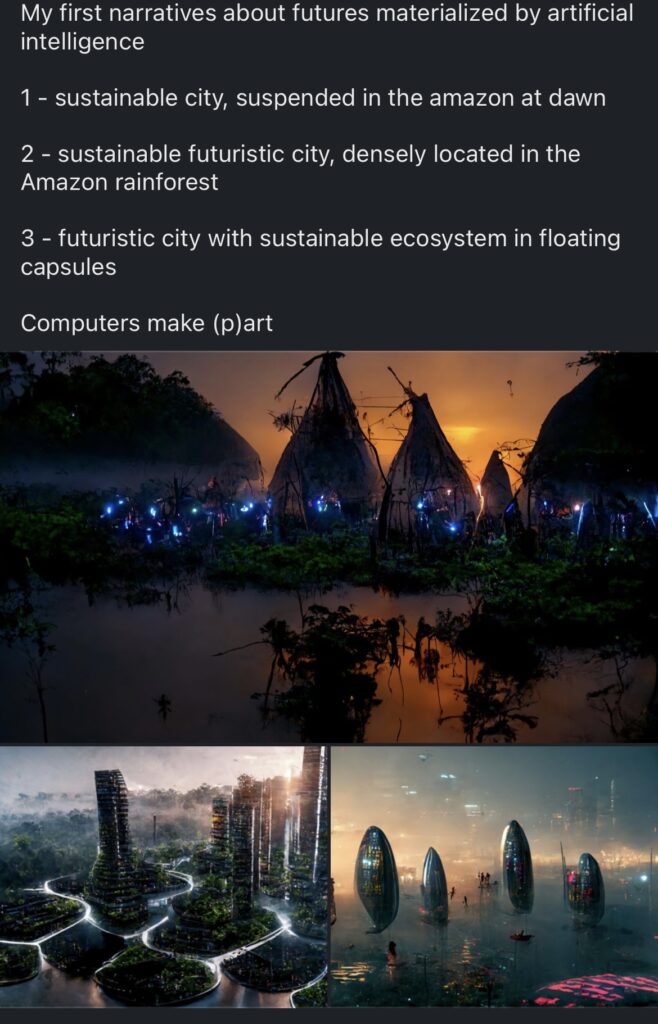Of course those images of from the James Webb were amazing, what were we expecting? This blog has become really irregular. This simple fact is that I have a young baby, an active training programme and am doing a bunch of online courses because I now work in a proper business and need to bolster that side of my skill set.
I find myself reading things just to have read them rather than taking time to reflect which is the point I guess. I think once these courses are done I am going to dedicate the time to PhD work. People have been asking recently: I’ve been on a year’s break for the baby and covid and in September I’ve decided to pick it up again but time is not on my side there. It’s been start-stop for years and it hasn’t found a rhythm. So when I start again I’m going to be committing to real deadlines and timeframes to get it done and get it out in the next 24 months. A part time PhD in basically two years.
Pictures of pictures of pictures.

This is an example of a post I’m seeing increasingly regularly on LinkedIn particularly but also on Twitter dot com. I’m not a fan of calling people out but this is an alarmingly uncritical epidemic. The spread of image generation ML like Dall-E and Midjourney have resulted in this proliferation of prompt imagery with an accompanying drum roll of amazement, shock and optimism about the future of this technology.
They are increasingly used by futurists and people in the futures space to visualise things that they do not otherwise have the craft or technical skill to visualise. But there’s little critical consideration of the fact that they are simply replicating the existing aesthetic, visual and imaginary tendencies that the system has been trained on. These images aren’t new, or novel or different, they are automated remixes of the cultural hegemony and the data they’ve been trained on. Of course there’s a critical pathway in remixing as we know well from music but those are consciously presented that way. For example, a lot of the more interesting things coming out of ML artwork is in juxtaposing things that are logically impossible or contradictory to see how the machine responds to these fallacies. This is a conscious and critical use of remixing to expose the system.

There’s also a particular colonial fantasy to the images produced in this particular thread. Further down, someone else uses the same system to generate a ‘future’ African city. Afrofuturism and similar movements sure offer an exciting alternative to the dominant aesthetic of the future but it feels grotesque to exploit it through a GAN; both removing and erasing the artistry of afrofuturist artists and the effort they’ve undertaken to challenge our imagination as well as appropriating the aesthetics for your own LinkedIn likes.
These images are probably better than the CGI images developed by big brands based off the Hollywood visuals that dominate the ‘future cities’ space and I absolutely agree that there’s something useful in helping people quickly visualise concepts and scenarios. However, I’m not convinced it’s possible to expand the imaginary potential of visual culture through ML solely. It can be used as a prompt or partner and a tool for creative thinking but is not a useful way of producing genuinely critical and imaginatively emancipatory images.
Short Stuff
- Is there a difference between a cult and a brand? So asks Jarrett Fuller in his lates piece for AIGA. Obviously there isn’t, we sort of knew that but he usefully walks us through a bunch of examples and references. He also appears to have an encyclopaedic knowledge of documentaries on cults.
- Theories of global collapse: closing down or opening up the futures? Good evidence that doomy scenarios actually encourage action. Where and how is particularly interesting, more local, individual pro activity seems to results from a comprehension of ‘collapsology.’
- ‘Imaginable reads as a guide for how to eat the future, how to capture and entrain it, brought forth by a series of consultancy exercises that are partly responsible for how we got where we are right now.’ Interesting critique of Jane McGonigal’s new book and the sort of futurism that tangentially nods at the climate crisis or even suggests it’s a great way to grow. I’ve spent some time around that recently. And I’m doing McGonigal’s Coursera.
- Shannon Mattern on Multispecies Wordlbuilding podcast talking about trees as charismatic megaflora, their use in computing metaphors and deployment as a distraction to hard problems. Also her prolific writing, disciplines, grafting etc. etc. Crikey she’s so worldly.
I wrote this one over two weeks but it doesn’t look like it. Ok, love you, bye.